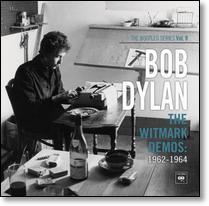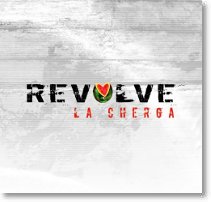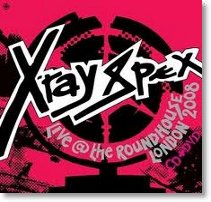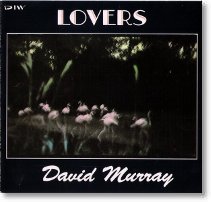A Consumer Guide to the Trailing Edge: May, 2011
Recycled Goods (#85)
by Tom Hull
 |
 |
 |
 |
Still catch as catch can. I'm not hustling any significant amount of recycled goods -- a little jazz, the odd occasional world music album. When I look at this year's metacritic file (and for that matter the 2010 file), I see things worth exploring, but several things steer me away from using Rhapsody (aside from the fact that lots of these records just aren't available): no sense of the packaging and documentation, which is one of the main reasons why one buys reissues; multiple disc sets tend to overwhelm my patience when streaming; and on my own, I don't feel much motivation to reappraise reissues I own satisfactory originals of. A venue with some clout and some money would change the economics here. For instance, back when I was on Static I got just about everything Sony/Legacy released, and reviewed everything but the Verity gospel sets and, well, I still have The Essential Jars of Clay on my shelf -- but I dutifully mopped up all the Journey and Barry Manilow reissues. Compared to that, the Jayhawks would be a pleasure.
Back in the real world, what I find myself doing is using Rhapsody to pick up old stuff that catches my fancy. (Alternatively, I find this column to be the most appropriate place to file old records when I get to them.) David Murray completism makes up the biggest chunk below. A few years ago, I did a David Murray Consumer Guide which hit most of the high points but left me with a few holes, mostly from Murray's prodigious DIW years. Turns out Rhapsody has the DIWs and a few other items I had missed. Then, just after I gobbled them up, Billy Bang died and I went searching for whatever I hadn't heard before. Then, by the end of the month, more deaths: Poly Styrene (of X-Ray Spex), Phoebe Snow, and Hazel Dickens (nothing below because I couldn't find anything I hadn't heard already, but if you can find anything -- especially Hazel and Alice, grab it). As for Brute Force, the publicist sent me a zip file which I lost, but I figured I owed him this much. La Cherga I could just as well slipped into the Rhapsody Streamnotes column -- it is a new record, after all, but long ago I got so desperate for world music I folded it all in here. Now it's just a muddle, but until something happens to straighten me out, muddle it will be.
Neil Diamond: The Bang Years 1966-1968 (1966-68 [2011], Legacy): Started in a duo called Neil and Jack, wrote songs in the Brill Building (most famously "I'm a Believer" for the Monkees), signed to Bang in 1966 where he cut two albums and scored a few minor hits -- "Cherry, Cherry" hit number six, "Girl, You'll Be a Woman Soon" went top-ten, three more top twenty. This rounds them all up, usefully if you have a use for them. Diamond always seemed a little starched, too straight and too stiff for rock even when he wasn't slouching toward opera. In fact, the cut I like best is his cover of "Hanky Panky," starting with his protests against doing it. B+(*) [R]
Bob Dylan: The Bootleg Series Vol. 9: The Witmark Demos: 1962-1964 (1962-64 [2010], Columbia/Legacy, 2CD): Solo demos, cut for his publishing company: 47 songs, one non-original ("Baby, Let Me Follow You Down"), all but four cuts previously unreleased; mostly unfamiliar to me -- I count 13 songs that appeared on his early albums (eight from The Freewheelin' Bob Dylan, which is the one to lean on), although I recognize a couple more ("The Death of Emmett Till," "Talkin' John Birch Paranoid Blues") from somewhere. This is the sort of thing that might have seemed like dull excess at the time but comes off as history-in-the-making now. Perhaps part of the charm is that Dylan's DIY folkie period didn't last very long. Another Side of Bob Dylan only picks up one song here: "Mr. Tambourine Man," a demo Witmark the Byrds bought and turned into a hit -- something Dylan was ready to do on his own. A-
I, Brute Force: Confections of Love (1966-67 [2010], Bar/None): In an infinite universe everything gets reissued sooner or later. However, in our relativistic universe I didn't expect this to worm its way back into my consciousness. Released by Columbia in 1967, I expropriated a copy when an apartment mate stuck me with his rent bill -- a cache that included such dreck as early Vanilla Fudge and Rotary Connection albums, but this was by far the worst. (The prize find was an edition of the Temptations' Greatest Hits, pressed in red plastic with all the print in Chinese.) IBF was Brill Building hack Stephen Friedland. He later dropped the "I" and cut a single for Apple called "King of Fuh" which defined the rest of his pathetic life: in 2006 he even recycled the title and character for a "musical comedy." The single is included here, transforming a 12-song LP into a 16-song best-of -- all you need plus sixteen extra songs. To be fair, he could be catchy ("To Sit on a Sandwich") or quotable ("Tapeworm of Love") but never at the same time. D+ [R]
La Cherga: Revolve (2011, Asphalt Tango): Band hails from Croatia, Bosnia, Macedonia, and Jamaica, the latter offering the dub sound system concept, the rest filling in beats and horns although their beats remain cosmopolitan, partly because the band itself is based in posh Vienna, not the struggling remains of Yugoslavia. Their first album's crucial vocalist-lyricist Irina Karamarkovic has been replaced with Bosnian Adisa Zvekic and occasional guest MCs, leaving less sense of persona or personal allure, not that dancers mind. A-
David Murray: Live at the Lower Manhattan Ocean Club (1977 [2010], Jazzwerkstatt): In 2006 I was one of five writers asked to work up a consumer guide to the records of a jazz great. I was the only one to pick a living artist: tenor saxophonist David Murray, b. 1955 in California, raised on church, funk, and saxophonists from Paul Gonsalves to Albert Ayler. (The others opted for Billie Holiday, John Coltrane, Thelonious Monk, and Sun Ra.) I managed to pick out and write short reviews of seventeen key albums, from Low Class Conspiracy in 1976 through Now Is Another Time in 2003. At the time I credited him with 90 albums as a leader and 90 more as a sideman, and figured I had heard 60 + 40 of them -- pretty good that that left some gaps, most notably in the late 1970s when he moved to New York and took the "jazz loft scene" by storm. That period is mostly documented by live albums like this one on defunct labels: this set was originally released by India Navigation on two LPs, then in 1989 was squeezed onto one CD by hacking about eight minutes off the last song. It's finally back in print, the times slightly rejiggered from the CD. It's not a long lost classic, but it has historical interest -- for one thing, Murray plans soprano sax on his trashed trad jazz "Bechet's Bounce" -- and then some. A quartet with Lester Bowie the opposite horn, Fred Hopkins on bass, and Phillip Wilson on drums. Hopkins is already a fascinating player, and Bowie's wit complements Murray's power. B+(**) [R]
Phoebe Snow: The Very Best of Phoebe Snow (1974-91 [2001], Columbia/Legacy): Started off as a singer-songwriter with a sly-quirky-sappy hit called "Poetry Man" but three albums in she started doing covers, getting more range out of a remarkable voice -- "Teach Me Tonight" has never been done more convincingly -- although sometimes the arrangements get the best of her, especially when she tries to go funky. Her career stalled after her fifth album in 1978, with an occasional record here and there until she died this month. With her albums inconsistent, someone should be able to put together a superior compilation; however, Columbia tried picking ten songs for their 1982 The Best of Phoebe Snow and missed, escalating to fourteen with mixed results here. Among the missing: "In My Girlish Days," from 1976's It Looks Like Snow, probably still her best. B+(**) [R]
X-Ray Spex: Live @ the Roundhouse London 2008 (2008 [2009], Year Zero): The great lost British punk group from 1977, like the more famous Sex Pistols cut a series of great singles combined into a single album, but both the singles and the album were better, partly because singer Poly Styrene made them more human, and partly because saxophonist Lora Logic made them noisier. The bipolar singer managed to cut a nice solo album in 1980 and another more upbeat one in 2011 when she was dying of cancer -- a career trajectory we'll long puzzle over. In between, enough people revered the band to welcome their occasional reunions -- a gig in 1991 and this one in 2008, a second album in 1995 which provides 4 of 20 songs here ("Oh Bondage Up Yours!" reprised for the encore). Live they were even rougher, and the energy here is off the charts, but a couple of non-singles stand out especially clear: "I Can't Do Anything" and "I Live Off You" -- the latter as insightful a treatise on capitalist economics as anything Karl Marx wrote. Package comes with a DVD which I haven't seen, but for once would love to. A- [R]
Briefly Noted
Billy Bang Sextet: The Fire From Within (1984 [1985], Soul Note): Rhapsody files this under trumpeter Ahmed Abdullah, who dominates the early going, but the violin-guitar-bass keep it all in sync and racing along, as does Thurman Barker's marimba on top of Zen Matsuura's drums. A- [R]
Marilyn Crispell: Live in Berlin (1982 [1984], Black Saint): One piece on first side, two on second, all brawling, scrapping free jazz, the pianist doing her best Cecil Taylor impression, Peter Kowald and John Betsch hitting back, the quartet filled out out with violinist Billy Bang, stuck between a horn role and the bassist, not amped loud enough to take over the album, but very much in the thick of things. B+(**) [R]
Bob Dylan: In Concert: Brandeis University 1963 (1963 [2011], Columbia/Legacy): The tenth in Dylan's Bootleg Series, which at its best provides spot checks relative to the adjacent studio albums, in this case The Freewheelin' Bob Dylan; short (38:22), with a conspicuous intermission, the irony of "Talkin' John Birch Paranoid Blues" doesn't go far, but the deadpan grind of "Ballad of Hollis Brown" and "Masters of War" does, and the rest coasts from there. B+(**) [R]
The Flying Burrito Brothers: Authorized Bootleg: Fillmore East, New York, N.Y.: Late Show, November 7, 1970 (1970 [2011], Hip-O Select): Gram Parsons' pioneering country-rock group, two albums down, Parsons soon to split for a brief solo career and death in 1973; nothing here that's not better on the albums, except the covers too minor to make it -- "Six Days on the Road" is spirited, but "Feel Good Music" isn't. B [R]
Clarence "Jelly" Johnson: Low Down Papa (1920s [2011], Delmark): Obscure early stride pianist, recorded a bit 1923-25 but is nicely represented on these clean "enhanced pianola rolls" -- a little bloodless compared to the usual 1920s scratchiness, but a fine example of the emerging stride style. B+(**)>
David Murray: Children (1984 [1986], Black Saint): Three Murray tunes plus "All the Things You Are" done by a quintet with James "Blood" Ulmer's guitar and Don Pullen's piano locked in a furious race; thrilling when they keep it up, loses something when the pace slackens. B+(**) [R]
David Murray: Recording NYC 1986 (1986 [1995], DIW): Another snapshot from a memorable year -- started with I Want to Talk About You and ended with The Hill; a quartet, of course, but with guitarist James Blood Ulmer on guitar instead of the usual piano, Fred Hopkins on bass and Sunny Murray on drums; sound is a little muffled, but the tenor sax has no problem breaking through. B+(**) [R]
David Murray/Jack DeJohnette: In Our Style (1986 [1989], DIW): Mostly tenor sax-drums duets, the drummer marvelously supportive (as ever), the saxophonist psyched up; two cuts add Fred Hopkins on bass, never a bad idea; DeJohnette plays a bit of credible piano, and kicks off the final cut with some exotic percussion -- I thought vibes at first, but given the title is "Kalimba" it's most likely African thumb piano. A- [R]
David Murray: Lovers (1988 [1989], DIW): Cut at the same January 1988 studio session that also produced Deep River, Ballads, and Spirituals, same quartet; mostly ballads, "In a Sentimental Mood" the only standard, its solo coda Murray at his most tender; on "Ming" pianist Dave Burrell rises to matche Murray's emotional bravura. A- [R]
David Murray Quintet: Remembrances (1990 [1991], DIW): Cover suggests this is child's play, and indeed this is exceptionally light and lively, with Hugh Ragin's trumpet dicing with Murray's tenor sax, and pianist Dave Burrell mixing some boogie into the rhythm section; less explicit about its place in the tradition than Tenors or Sax Men, except on "Dexter's Dues." B+(***) [R]
David Murray: Death of a Sideman (1991 [2000], DIW): Featuring trumpeter Bobby Bradford, who preceded Don Cherry in Ornette Coleman's quartet and had a long collaboration with John Carter up to his death in 1991; Bradford wrote the songs in Carter's memory, and Murray picks up the thought; with Coleman alum Ed Blackwell on drums, Murray regulars Dave Burrell and Fred Hopkins on piano and bass; poignant, profound. A- [R]
David Murray Octet: Picasso (1992 [1995], DIW): The title comes from a Coleman Hawkins piece, but where Hawk recorded the first landmark tenor sax solo, Murray wraps a seven-slice suite around the idea and fleshes it out with five horns and some dazzling Dave Burrell piano; not as jarring or protean as earlier octets like Ming, the sense of motion and flow is flush throughout. B+(**) [R]
David Murray Quartet: Love and Sorrow (1993 [2000], DIW): Another ballad album, framed with "You'd Be So Nice to Come Home To" and "You Don't Know What Love Is"; the sole original "Sorrow Song (for W.E.B. DuBois)" leading into "A Flower Is a Lovesome Thing" for what may be his most quiet storm side ever; an especially touching John Hicks on piano, Fred Hopkins on bass, Idris Muhammad on drums. A- [R]
David Murray: Circles: Live in Cracow (2003, Not Two): Sax trio, featuring local bass and drums duo, telepathic twins Marcin Oles and Bartlomiej Brat Oles, although they seem to be overwhelmed by their guest; Murray holds the spotlight, showing off his extensive bag of improvisatory tricks, especially on bass clarinet. B+(***) [R]
Ruth Olay: Olay! O.K.! (1963 [2009], Essential Media Group): A jazz singer from Los Angeles, recorded a dozen albums from 1956-66, this the only one even marginally in print; nothing on the nondescript string orchestra -- maybe they're in a witness protection program? -- but the singer has remarkable poise. B+(*) [R]
Phoebe Snow: Live (2008, Verve Forecast): Five records from 1974-78 with Columbia, four more in the next thirty years while she cared for a brain-damaged daughter who died in 2007; this was meant to be her return to the spotlite -- at one point she thanks the audience for keeping her alive -- but now looks like her swansong; some old stuff and vigorous new covers, like "Piece of My Heart" and "Rockin' Pneumonia and the Boogie Woogie Blues." B+(**) [R]
String Trio of New York: Area Code 212 (1980 [1981], Black Saint): Long before anyone spoke of "chamber jazz" a pioneering configuration, with violin (Billy Bang), guitar (James Emery), and bass (John Lindberg), all three contributing songs and balancing off their efforts; Emery has the toughest time, sometimes suggesting bits of Spanish classical, but the record picks up steam when Bang takes charge. B+(*) [R]
String Trio of New York: Common Goal (1981 [1982], Black Saint): Emery's guitar stands apart, struck into distinct notes or chords where the violin and bass are mostly arco, but this time that often works as percussion; besides, Bang and Lindberg work up more of a lather, even when Bang interjects some flute on "San San Nana" -- their intensity sweeps all before it; and they look like such nice guys on the cover. B+(***) [R]
String Trio of New York: Rebirth of a Feeling (1983 [1984], Black Saint): Seems like pretty close to their average album, with Lindberg's bass stout and central, Bang's violin whirling around the periphery, and Emery's guitar poking holes here and there; Emery appears on the cover with a small guitar, credit says soprano guitar. B+(**) [R]
String Trio of New York: Natural Balance (1986 [1987], Black Saint): Bang's fifth and last album with the group -- Lindberg and Emery carried on with 13 more albums up through 2008, using in series a veritable pantheon of violinists: Charles Burnham, Regina Carter, Diane Monroe, Rob Thomas; Emery's "Texas Koto Blues" is the most striking thing here, both before and after Bang enters; first record so far where I felt Emery was key, not much else stands out. B+(*) [R]
Legend: B+ records are divided into three levels, where more * is better. [R] indicates record was reviewed using a stream from Rhapsody. The biggest caveat there is that the packaging and documentation hasn't been inspected or considered, and documentation is especially important for reissues. But also my exposure to streamed records is briefer and more limited, so I'm more prone to snap judgments.
For this column and the previous 84, see the archive.
Notes
Copyright © 2011 Tom Hull.